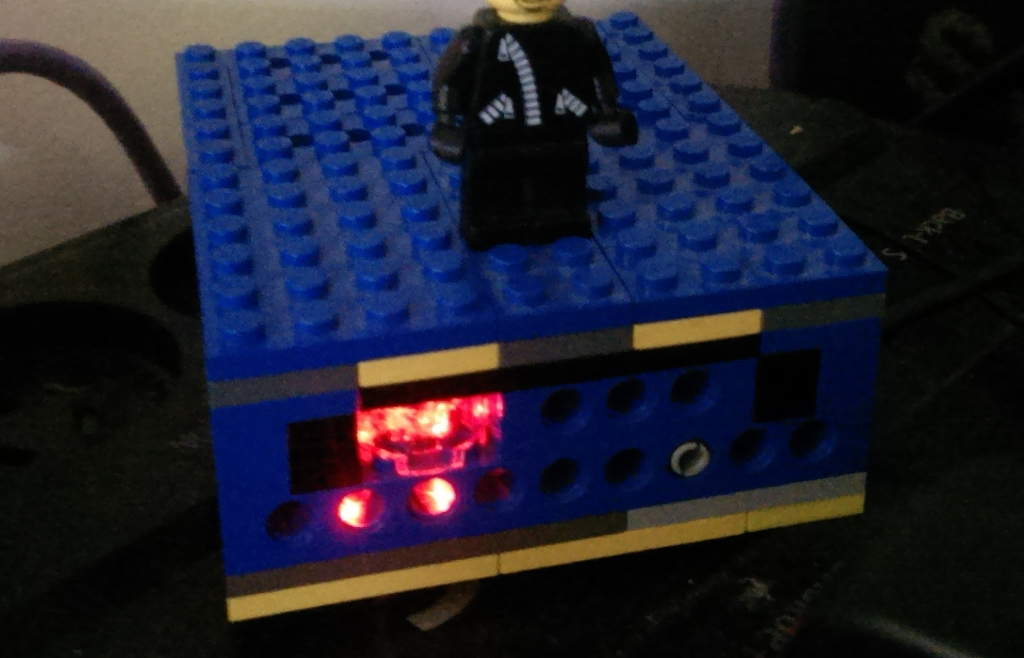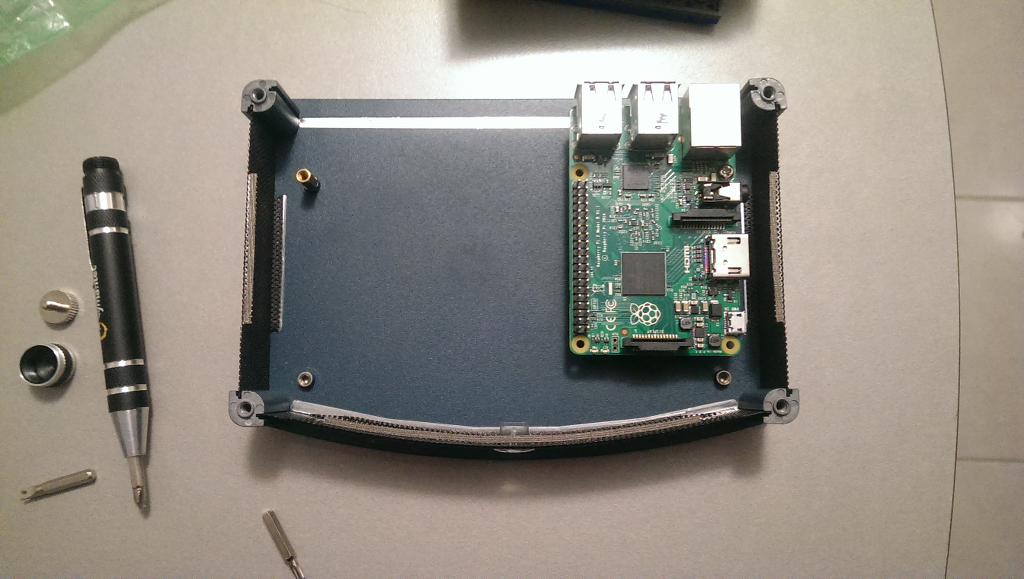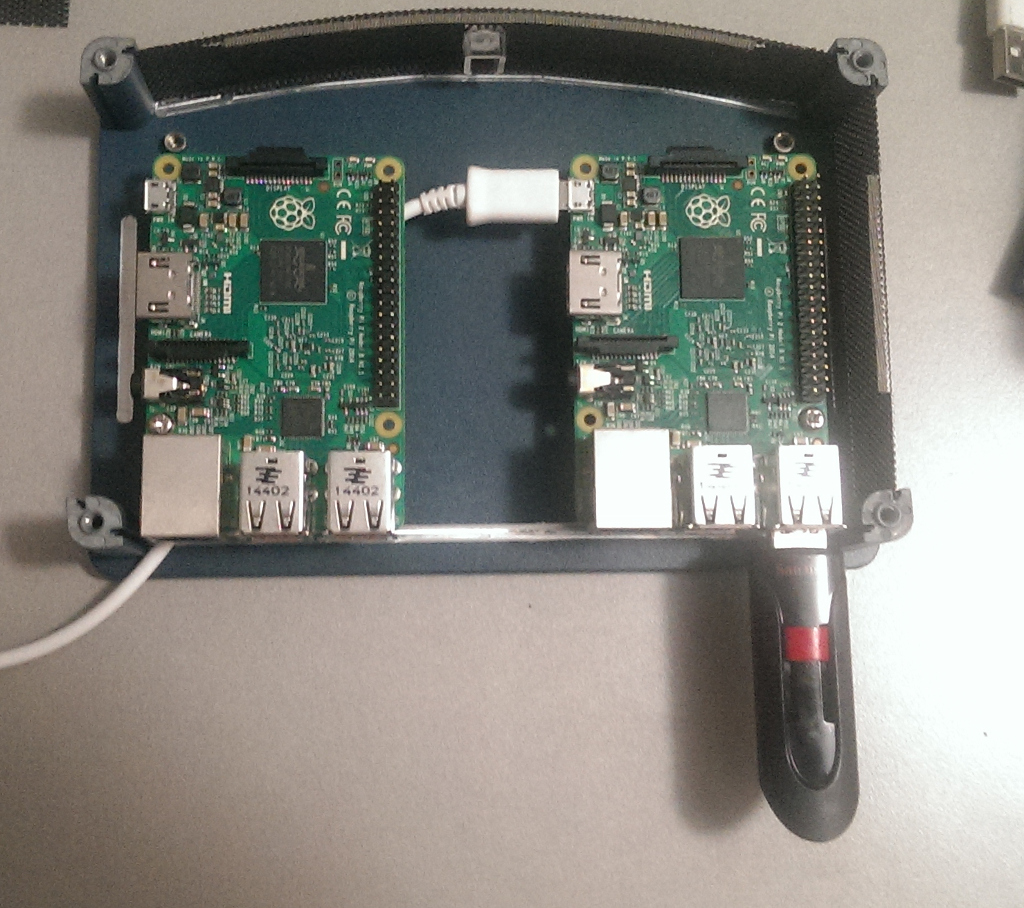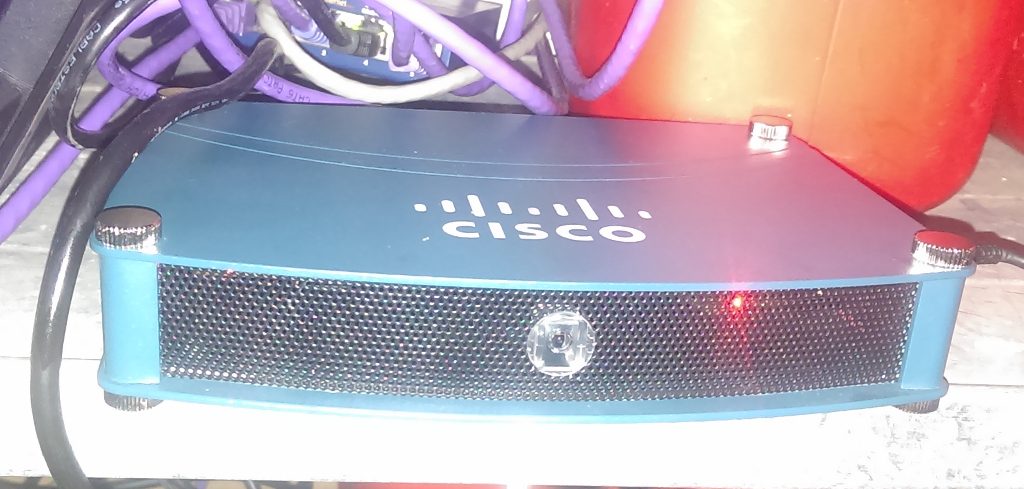I use raspberry pi’s quite alot in my work and home life, they are a very handly little platform for both development and electronics that can be had very cheaply. Since the r-pi2’s have come out, i have been slowly moving some services onto the new boards, but not had cases to put them all into. This got me motivated to finally tackle a r-pi2 lego case. I made it from lego technic that i had lying around, it has worked quite well for 6+ months so far:
However i have been battling with slow connections on the r-pi’s that i use as WAN connectivity devices (including a VPN router so i can go dark against data retention, Squid proxys, caching name servers, etc.). Although it would be a simple task to extend the lego case, i had come across another solution in my travels at work.
I had just been swapping out old Cisco 4400 series Digital Media Players. One was completely dead so i opened it up and stripped out the contents. I suspected it would be a good size for two r-pi2’s plus it has good shielding. I had to strip out the back plate, and also cut a hole in one side to allow the USB power connection to the pi2.
The second r-pi2 also fits in with its USB power, making the case a very good size for these boards. I am a little concerned that they are only screwed in using one screw at the moment, i think i will probably mount some more brass stand offs to stabilise it. The USB and Ethernet ports are accessible
The top of the case touches on the ethernet ports of the r-pi2’s, but it doesn’t stop being able to re-fit it.
Again, if you want to get your hands dirty with coding or mods, the r-pi’s are an excellent base to start with. And with a version of Windows 10 coming along to supplement the range of OS’s already available its becoming a very flexible platform.



